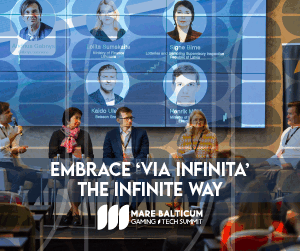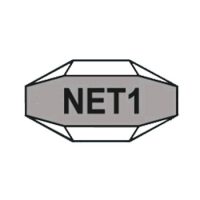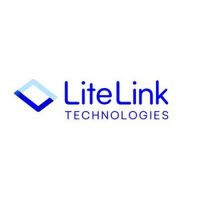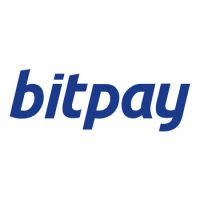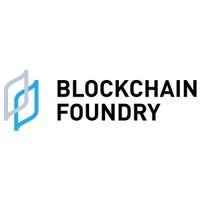Blockchain Press Releases
Hyperscale Computing Market worth $109.2 billion by 2028 – Exclusive Report by MarketsandMarkets™
CHICAGO, Aug. 3, 2023 /PRNewswire/ — Growth, technological progress, edge computing, AI adoption, improved security, sustainability initiatives, and potential research into quantum computing, along with the emergence of hybrid and multi-cloud strategies and industry-specific solutions, will characterise the future of the Hyperscale Computing Market.
The Hyperscale Computing Market size is expected to grow from USD 40.9 billion in 2023 to USD 109.2 billion by 2028 at a compound annual growth rate (CAGR) of 21.7% during the forecast period, according to a new report by MarketsandMarkets™. Hyperscale computing has emerged as a game-changer in the digital era, revolutionizing the way businesses scale their computing resources. With its ability to provide scalable, flexible, and cost-effective infrastructure, the Hyperscale Computing Market is experiencing significant growth and transforming industries across the globe. In today’s data-driven world, businesses generate vast amounts of data, and traditional IT infrastructures often struggle to handle the increasing workload. Hyperscale computing offers a solution by enabling organizations to scale their computing resources dynamically and on demand. Whether handling sudden spikes in user traffic or accommodating rapid business growth, hyperscale computing empowers businesses with the agility to adapt swiftly to changing demands.
Browse in-depth TOC on “Hyperscale Computing Market“
300 – Tables
100 – Figures
275 – Pages
Download PDF Brochure @ https://www.marketsandmarkets.com/pdfdownloadNew.asp?id=77118278
Scope of the Report
|
Report Metrics |
Details |
|
Market size available for years |
2018–2028 |
|
Base year considered |
2022 |
|
Forecast period |
2023–2028 |
|
Forecast units |
Value (USD Million/Billion) |
|
Segments Covered |
Offering, Application, Vertical, and Region |
|
Geographies Covered |
North America, Europe, Asia Pacific, Middle East and Africa, and Latin America |
|
Companies Covered |
Some of the significant Hyperscale Computing Market vendors are AWS (US), Google (US), Microsoft Corporation (US), IBM Corporation (US), Oracle Corporation (US), HPE (US), Alibaba Cloud (China), Tencent Cloud (China), Salesforce (US), Huawei (China), Viavi Solutions (US), Broadcom (US), AFL Hyperscale (US), OVHcloud (France), Iron Mountain (US), DigitalOcean (US), Rackspace (US), NTT Communications (Japan), and Digital Reality (US). |
Moreover, hyperscale computing offers the ability to process and analyze vast volumes of data; organizations can unlock valuable insights, drive data-driven decision-making, and foster innovation. Industries such as retail and e-commerce, finance, healthcare, and manufacturing leverage hyperscale computing to optimize operations, enhance customer experiences, and gain a competitive edge. The scalability and performance offered by hyperscale computing open doors to advanced technologies such as artificial intelligence, machine learning, and big data analytics, driving transformative changes in various sectors.
By offering, the services segment is expected to capture the highest CAGR during the forecast period.
The Hyperscale Computing Market by offering, includes solutions and services. The Hyperscale Computing Market covers various services, including consulting, integration and implementation, and training, support, and maintenance. Service providers in the Hyperscale Computing Market offer consulting services to help organizations assess their requirements, define their infrastructure strategy, and develop a roadmap for hyperscale adoption. It assists in designing and architecting the infrastructure to ensure scalability, performance, and reliability. The implementation and setup of software and networking components are all included in integration and implementation services, assuring resource use and seamless integration. This comprises activities such as network configuration, virtualization, and workload movement. To reduce downtime and disruptions, service providers also provide support services such as technical help, problem-solving, and issue resolution. They help resolve potential network problems, hardware or software breakdowns, and other operational difficulties.
Based on application, the cloud computing segment is expected to account for the largest market share during the forecast period.
The Hyperscale Computing Market, by application, is segmented into cloud computing, big data, IoT, and other applications. It is expected that during the forecast period, the cloud computing segment is estimated to account for the largest market size and share in the Hyperscale Computing Market. Hyperscale computing allows cloud providers to scale their infrastructure rapidly and seamlessly. By utilizing hyperscale architectures, cloud providers can add and remove computing resources on-demand, matching their users’ dynamic needs, and enabling cloud providers to provision resources flexibly and granularly. With hyperscale architectures, cloud providers can allocate compute, storage, and networking resources in a highly dynamic and efficient manner, ensuring optimal utilization and cost-effectiveness. Users can easily scale up or down their resource allocations based on their needs, paying only for their consumption. This scalability ensures that cloud services can handle fluctuating workloads efficiently, providing high performance and availability.
Request Sample Pages @ https://www.marketsandmarkets.com/requestsampleNew.asp?id=77118278
Moreover, hyperscale computing enables the automation and orchestration of cloud resources and services. Cloud providers can leverage hyperscale architectures to automate resource provisioning, deployment, and management processes. This automation streamlines operations, reduces manual intervention, and improves the efficiency of cloud service delivery.
North America is projected to hold the largest market share during the forecast period.
The Hyperscale Computing Market by region has been segmented into North America, Europe, Asia Pacific, the Middle East and Africa, and Latin America. As per region, North America is estimated to account for the largest market share in the global Hyperscale Computing Market in 2023, and this trend is expected to continue during the forecast period. The Hyperscale Computing Market in North America has been studied for countries including the US and Canada. The adoption of the hyperscale computing solution is expected to be the highest in North America compared to other regions. The rising need for cloud services, big data analytics, artificial intelligence, and other data-intensive applications has led to tremendous growth in hyperscale computing in North America in recent years. The development and expansion of hyperscale infrastructure by the “Big Three” cloud providers, including Amazon Web Services (AWS), Microsoft Azure, and Google Cloud Platform (GCP), have further fuelled the market growth in the region. These businesses run sizable data centers all over the region to provide their consumers with cloud services.
Top Key Companies in Hyperscale Computing Market:
Some of the significant Hyperscale Computing Market vendors are AWS (US), Google (US), Microsoft Corporation (US), IBM Corporation (US), Oracle Corporation (US), HPE (US), Alibaba Cloud (China), Tencent Cloud (China), Salesforce (US), Huawei (China), Viavi Solutions (US), Broadcom (US), AFL Hyperscale (US), OVHcloud (France), Iron Mountain (US), DigitalOcean (US), Rackspace (US), NTT Communications (Japan), and Digital Reality (US).
Recent developments:
- In June 2023, Oracle Cloud Infrastructure (OCI) announced the availability of new compute instances based on the 4th Generation AMD EPYC processors. These instances leverage the advanced features and performance capabilities of the AMD EPYC processors to deliver enhanced computing power, efficiency, and security for workloads running on the Oracle Cloud.
- In March 2023, AWS and Nvidia collaborated to develop next-generation infrastructure to support the training of large machine learning (ML) models and the creation of generative AI applications. This collaboration combines AWS’s expertise in cloud computing with Nvidia’s industry-leading GPU technology. The collaboration aims to address the growing demand for computational power and specialized hardware required for training increasingly large and complex ML models.
- In July 2022, AWS to expand its portfolio included memory-optimized Amazon EC2 R6a instances featuring AMD EPYC (Milan) processors 10 percent less expensive than comparable x86 instances. High-performance computing and video processing workloads, which benefit from decreased network latency and highly scalable inter-node communication, are supported by Elastic Fabric Adapter (EFA) on R6a instances, which are built on the AWS Nitro System.
Inquiry Before Buying @ https://www.marketsandmarkets.com/Enquiry_Before_BuyingNew.asp?id=77118278
Hyperscale Computing Market Advantages:
- By using hyperscale computing, enterprises may dynamically and on-demand scale their IT infrastructure. As a result, they are able to easily modify their computer resources to handle a variety of workloads, assuring the best performance and financial effectiveness.
- Businesses can take advantage of economies of scale by utilising cloud-based hyperscale data centres, which lowers capital expenditures for hardware and maintenance. When compared to conventional on-premises data centres, it is a more affordable option because they just pay for the resources they utilise.
- High availability and data resilience are ensured by the redundancy and failover technologies used in hyperscale data centres. By reducing the chance of downtime and data loss, this creates a dependable computing environment.
- Businesses may serve clients and users globally with reduced latency and a better user experience thanks to the data centres that hyperscale computing providers have spread out across several regions.
- Businesses can choose from a variety of services, including virtual machines, storage, databases, and AI/ML capabilities, with the flexibility of hyperscale computing. As a result, they can modify their IT infrastructure to meet their unique requirements.
- To protect customer data, hyperscale data centres make significant investments in security safeguards and compliance requirements. They use cutting-edge security procedures, encryption, and monitoring to protect against online dangers.
- With the help of cutting-edge cooling technologies and renewable energy sources, many hyperscale data centres are built to be energy-efficient. By doing this, the carbon footprint is decreased, and environmental sustainability objectives are met.
- Through self-service interfaces, businesses may swiftly deploy and provision computer resources in a matter of minutes, reducing the time needed to set up and configure new systems.
Report Objectives
- To define, describe, and forecast the Hyperscale Computing Market by offerings (solution and services), application, vertical, and region
- To provide detailed information about the major factors (drivers, restraints, opportunities, and industry-specific challenges) influencing the growth of the Hyperscale Computing Market
- To analyze the market with respect to individual growth trends, prospects, and contributions to the overall market
- To forecast the market size of five main regions: North America, Europe, Asia Pacific (APAC), Middle East and Africa (MEA), and Latin America
- To analyze the opportunities in the market for stakeholders by identifying the high-growth segments of the market
- To profile the key players in the market and comprehensively analyze their core competencies in each subsegment
- To analyze the competitive developments, such as partnerships, acquisitions, and product/solution launches and enhancements, in the Hyperscale Computing Market
- To analyze the impact of the recession on the global Hyperscale Computing Market
Browse Adjacent Markets: Software and Services Market Research Reports & Consulting
Related Reports:
Captive Portal Market – Global Forecast to 2028
Law Enforcement Software Market – Global Forecast to 2028
IoT in Healthcare Market – Global Forecast to 2028
Smart Cities Market – Global Forecast to 2027
Digital Workplace Market – Global Forecast to 2026
About MarketsandMarkets™
MarketsandMarkets™ is a blue ocean alternative in growth consulting and program management, leveraging a man-machine offering to drive supernormal growth for progressive organizations in the B2B space. We have the widest lens on emerging technologies, making us proficient in co-creating supernormal growth for clients.
The B2B economy is witnessing the emergence of $25 trillion of new revenue streams that are substituting existing revenue streams in this decade alone. We work with clients on growth programs, helping them monetize this $25 trillion opportunity through our service lines – TAM Expansion, Go-to-Market (GTM) Strategy to Execution, Market Share Gain, Account Enablement, and Thought Leadership Marketing.
Built on the ‘GIVE Growth’ principle, we work with several Forbes Global 2000 B2B companies – helping them stay relevant in a disruptive ecosystem. Our insights and strategies are molded by our industry experts, cutting-edge AI-powered Market Intelligence Cloud, and years of research. The KnowledgeStore™ (our Market Intelligence Cloud) integrates our research, facilitates an analysis of interconnections through a set of applications, helping clients look at the entire ecosystem and understand the revenue shifts happening in their industry.
To find out more, visit www.MarketsandMarkets™.com or follow us on Twitter, LinkedIn and Facebook.
Contact:
Mr. Aashish Mehra
MarketsandMarkets™ INC.
630 Dundee Road
Suite 430
Northbrook, IL 60062
USA: +1-888-600-6441
Email: [email protected]
Research Insight: https://www.marketsandmarkets.com/ResearchInsight/hyperscale-computing-market.asp
Visit Our Website: https://www.marketsandmarkets.com/
Content Source: https://www.marketsandmarkets.com/PressReleases/hyperscale-computing.asp
Logo: https://mma.prnewswire.com/media/660509/MarketsandMarkets_Logo.jpg
![]() View original content:https://www.prnewswire.co.uk/news-releases/hyperscale-computing-market-worth-109-2-billion-by-2028—exclusive-report-by-marketsandmarkets-301892534.html
View original content:https://www.prnewswire.co.uk/news-releases/hyperscale-computing-market-worth-109-2-billion-by-2028—exclusive-report-by-marketsandmarkets-301892534.html

Blockchain
Ethereum ETFs Aren’t Blockchain But Is A Revolutionary Tech: Top 6 Amazing Reasons To Invest In Them

The financial landscape is rapidly evolving, with the integration of blockchain technology and cryptocurrencies becoming more prominent. Among these, Ethereum ETFs (Exchange-Traded Funds) have emerged as a significant investment vehicle, offering exposure to the Ethereum blockchain’s native cryptocurrency, Ether (ETH), without requiring direct ownership. However, it’s crucial to understand that Ethereum ETFs are distinct from the blockchain itself and serve different purposes in the investment world.
Understanding Ethereum and ETFs
Ethereum: A decentralized platform that enables the creation and execution of smart contracts and decentralized applications (dApps). It operates using its cryptocurrency, Ether (ETH), which fuels the network.
ETF (Exchange-Traded Fund): A type of investment fund that holds a collection of assets and is traded on stock exchanges. ETFs can include various asset classes, such as stocks, commodities, or bonds.
Ethereum ETFs: The Intersection of Traditional Finance and Cryptocurrency
An Ethereum ETF provides a way for investors to gain exposure to the price movements of Ether without directly purchasing the cryptocurrency. This is achieved through an ETF structure, where the fund holds assets linked to the value of Ether, and investors can buy shares of the ETF on traditional stock exchanges.
Key Features of Ethereum ETFs:
- Indirect Exposure: Investors gain exposure to Ether’s price changes without needing to manage or store the cryptocurrency themselves.
- Regulatory Compliance: Unlike the relatively unregulated cryptocurrency market, ETFs operate under the oversight of financial regulators, offering a layer of investor protection.
- Accessibility: Ethereum ETFs are available through traditional brokerage platforms, making them accessible to a broader range of investors.
Why Invest in an Ethereum ETF?
- Diversification: Including an Ethereum ETF in a portfolio can provide exposure to the cryptocurrency market, potentially enhancing diversification beyond traditional assets.
- Convenience and Familiarity: ETFs are a familiar investment product, simplifying the process of investing in cryptocurrencies.
- Professional Management: ETF managers handle the investment decisions, including the buying and selling of assets, which can be advantageous for those less familiar with the cryptocurrency space.
- Regulatory Oversight: ETFs are subject to regulatory scrutiny, potentially offering more safety and transparency compared to direct cryptocurrency investments.
- Potential for Growth: As the cryptocurrency market grows, ETFs linked to assets like Ether may benefit from rising prices.
Key Differences Between Ethereum and Ethereum ETFs
While both are related to the Ethereum blockchain, Ethereum itself and Ethereum ETFs represent different forms of investment:
- Ethereum (ETH):
- Direct ownership of the cryptocurrency.
- Full exposure to Ethereum’s features, including staking and network participation.
- Traded on cryptocurrency exchanges.
- Highly volatile and largely unregulated.
- Ethereum ETF:
- Indirect exposure through shares representing Ether’s value.
- Traded on traditional stock exchanges under regulatory oversight.
- Offers a more stable and familiar investment structure.
- Typically lower volatility compared to direct cryptocurrency ownership.
Future Considerations for Ethereum ETFs
The approval and launch of Ethereum ETFs mark a significant milestone in bringing cryptocurrencies closer to mainstream finance. They offer a convenient and regulated means for investors to gain exposure to the growing digital assets market. However, they also come with limitations, such as not allowing direct participation in the Ethereum ecosystem’s innovations, like dApps and smart contracts.
As the market evolves, we may see more sophisticated financial products that better capture the full potential of the Ethereum ecosystem. For now, Ethereum ETFs provide a balanced option for those interested in cryptocurrency exposure within the framework of traditional finance.
In conclusion, while Ethereum ETFs offer a gateway into the world of digital assets, they should be viewed as complementary to, rather than a replacement for, direct investment in the underlying blockchain technologies. Investors should carefully consider their investment goals, risk tolerance, and the unique attributes of both Ethereum and Ethereum ETFs when making investment decisions.
Source: blockchainmagazine.net
The post Ethereum ETFs Aren’t Blockchain But Is A Revolutionary Tech: Top 6 Amazing Reasons To Invest In Them appeared first on HIPTHER Alerts.
Blockchain
Nexo Reaffirms Commitment to Data Protection with SOC 3 and SOC 2 Compliance
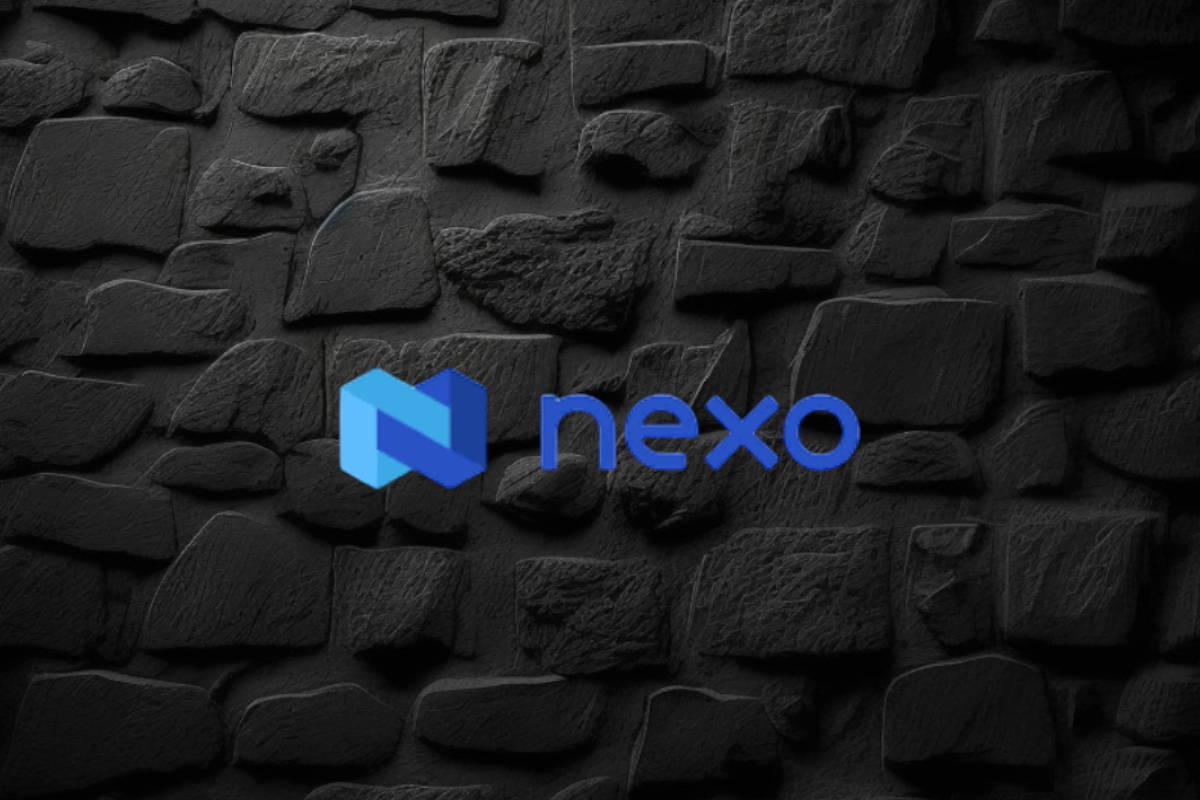
Nexo, a leading institution in the digital assets industry, has reinforced its commitment to data security by renewing its SOC 2 Type 2 audit and attaining a new SOC 3 Type 2 assessment without any exceptions. This rigorous audit process, conducted by A-LIGN, a respected independent auditor specializing in security compliance, confirms Nexo’s adherence to stringent Trust Service Criteria for Security and Confidentiality.
Key Achievements and Certifications
- SOC 2 and SOC 3 Compliance:
- SOC 2 Type 2: This audit evaluates and reports on the effectiveness of an organization’s controls over data security, particularly focusing on the confidentiality, integrity, and availability of systems and data.
- SOC 3 Type 2: This public-facing report provides a summary of SOC 2 findings, offering assurance to customers and stakeholders about the robustness of Nexo’s data security practices.
- Additional Trust Service Criteria:
- Nexo expanded the scope of these audits to include Confidentiality, showcasing a deep commitment to protecting user data.
- Security Certifications:
- The company also adheres to the CCSS Level 3 Cryptocurrency Security Standard, and holds ISO 27001, ISO 27017, and ISO 27018 certifications, awarded by RINA. These certifications are benchmarks for security management and data privacy.
- CSA STAR Level 1 Certification:
- This certification demonstrates Nexo’s adherence to best practices in cloud security, further solidifying its position as a trusted partner in the digital assets sector.
Impact on Customers and Industry Standards
Nexo’s rigorous approach to data protection and compliance sets a high standard in the digital assets industry. By achieving these certifications, Nexo provides its over 7 million users across more than 200 jurisdictions with confidence in the security of their data. These achievements not only emphasize the company’s dedication to maintaining top-tier security standards but also highlight its proactive stance in fostering trust and transparency in digital asset management.
Nexo’s Broader Mission
As a premier institution for digital assets, Nexo offers a comprehensive suite of services, including advanced trading solutions, liquidity aggregation, and tax-efficient credit lines backed by digital assets. Since its inception, the company has processed over $130 billion, showcasing its significant impact and reliability in the global market.
In summary, Nexo’s successful completion of SOC 2 and SOC 3 audits, along with its comprehensive suite of certifications, underscores its commitment to the highest standards of data security and operational integrity. This dedication positions Nexo as a leader in the digital assets space, offering unparalleled security and peace of mind to its users.
Source: blockchainreporter.net
The post Nexo Reaffirms Commitment to Data Protection with SOC 3 and SOC 2 Compliance appeared first on HIPTHER Alerts.
Blockchain
Marshall Becomes First US Senator to Walk from Controversial Crypto Bill He Co-Sponsored

Republican Senator Roger Marshall has withdrawn his support for the Digital Asset Anti-Money Laundering Act of 2023, a controversial bill he initially co-sponsored with Senator Elizabeth Warren and others. This bill, reintroduced in the Senate on July 27, 2023, aimed to bring the cryptocurrency industry into alignment with existing anti-money laundering (AML) and counter-terrorism financing (CTF) laws.
Key Provisions of the Bill
The legislation proposed stringent regulations on digital asset providers, including unhosted wallet providers, miners, and validators, by classifying them as financial institutions under the Bank Secrecy Act (BSA). It mandated these entities to adhere to BSA compliance requirements, which include extensive reporting and monitoring responsibilities. Additionally, the bill called for the Financial Crimes Enforcement Network (FinCEN) to establish regulations for reporting significant foreign digital asset holdings and to create compliance measures to address risks associated with anonymity-enhancing technologies.
Senator Marshall’s Shift
Marshall’s withdrawal from the bill comes as a surprise, particularly given his earlier criticisms of cryptocurrencies, which he has described as a “threat to national security.” This includes concerns over stablecoins like Tether potentially facilitating illegal activities and circumventing U.S. sanctions. Despite his earlier stance, Marshall’s departure from the legislation suggests a reconsideration of the bill’s implications or an alignment with broader political and industry perspectives on cryptocurrency regulation. His office has not provided a comment on the reasons for his withdrawal.
Political and Industry Reactions
The bill had garnered significant bipartisan support, with 18 co-sponsors, reflecting a broader concern in Congress over regulating the rapidly growing cryptocurrency market. However, it has also faced criticism for potentially imposing impractical compliance burdens that could stifle innovation and push crypto activities offshore. Critics argue that the bill’s stringent requirements could inadvertently drive users toward unregulated platforms, thereby undermining its intent to enhance security and regulatory oversight.
Broader Context
The withdrawal comes at a time when cryptocurrency regulation is a highly contentious issue in U.S. politics. Former President Donald Trump has promised to relax crypto regulations if elected, contrasting with the current administration’s more stringent stance. Under President Joe Biden, the Securities and Exchange Commission (SEC) and other regulatory bodies, led by figures like Gary Gensler, have taken a more rigorous approach to regulating the sector, which has drawn criticism for being overly restrictive.
Senator Marshall’s decision to step back from the Digital Asset Anti-Money Laundering Act reflects the complex and evolving nature of cryptocurrency regulation in the U.S. While the bill seeks to bring greater oversight and security to the crypto industry, it also raises concerns about regulatory overreach and its potential negative impact on innovation and privacy. As the debate continues, the U.S. legislative and regulatory landscape for cryptocurrencies remains in flux, balancing the need for security with the desire to foster technological innovation.
Source: decrypt.co
The post Marshall Becomes First US Senator to Walk from Controversial Crypto Bill He Co-Sponsored appeared first on HIPTHER Alerts.
-

 Blockchain4 days ago
Blockchain4 days agoBinance Cleared to Invest Customer Assets in US Treasury Bills: What It Means for Crypto and Dollar Dominance
-

 Blockchain4 days ago
Blockchain4 days agoDeep Custodian Limited Obtains Hong Kong TCSP License, Authorized to Provide Compliant Crypto Asset Custody Services
-

 Blockchain Press Releases2 days ago
Blockchain Press Releases2 days agoBybit Web3 Livestream Explores Cultural Meme Coins and Other Trends
-

 Blockchain2 days ago
Blockchain2 days agoBlockchain Intelligence Group adds additional modules and launches its Certified Cryptocurrency Investigator – Advanced Series
-

 Blockchain Press Releases2 days ago
Blockchain Press Releases2 days agoBybit Surges to Second Place in Derivatives Market, Solidifying Position as Global Crypto Trading Leader
-

 Blockchain3 days ago
Blockchain3 days agoBitAngels Network Hosts Blockchain Pitch Competition in Nashville
-

 Blockchain4 days ago
Blockchain4 days agoCoinW Continues Expedition Trek And Double Down On Presence At ETH-Native Events
-

 Blockchain1 day ago
Blockchain1 day agoKevin O ‘Leary Addresses Crypto Investing, Ethereum ETFs, and SEC Chair in Recent Interview





